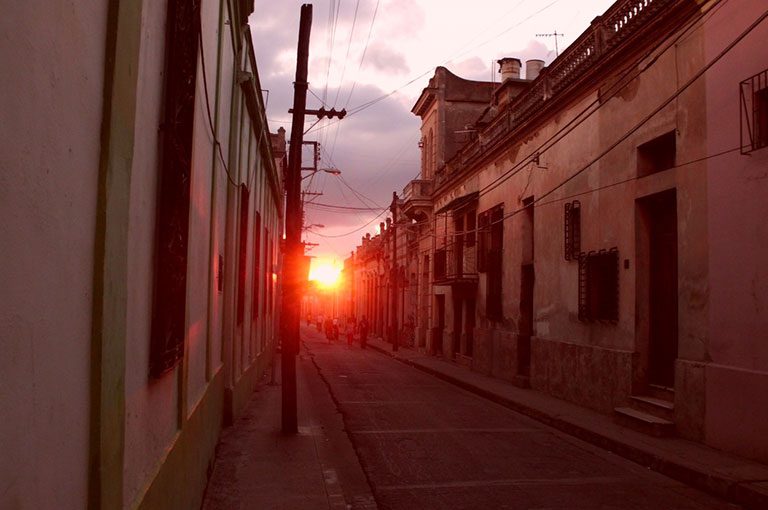In one of his vehement ones he proclaims love for their native city, Nicolás Guillén wrote My beloved streets from Camagüey, a profuse chronicle in people and places kept in the author’s memory.
Included in an edition of the magazine “Cuba Internacional” the text totally dedicated to Camagüey in April 1974, ratifies Guillén’s vocation for the chronicle, the gender which laid the foundation of his trajectory in the journalism, one of the modern categories of literature.
The story begins with an evocation to his birth, in a house that was accessory of the then marked with the number two and half on Hermanos Agüeros Street, located just a block and a half from the heart of the area declared Cultural Patrimony of Humanity in 2008.
The native housing
Today this place is a National Monument, a museum that exhibits diverse exponents related with the one who, for his lyrical force of deep social level, is recognized as the Cuban National Poet.
The text approaches facets like references to diverse public spaces, in its majority of the intricate local urban plot, of patrimonial, and rich value in alleys and old properties.
Hermanos Agüero, Honda, Hospital, Cisneros, Martí, San Clemente, Cristo, Horca, Lugareño, República, San Esteban, the alleys of Risa, Tío Perico and of the Funda del Catre, and dissimilar squares, figure among the places of the wide journey.
The memories also include people like family and friends
For example, to Beatríz – of whom Guillen was in love, but he felt a terrible fear of approaching her a word -, the printer Abelardo Chapellí, the professors Tomás Vélez and Rafael Zayas Bazán, the tailor Elesbaan Torres, the barber Pepillo Escobedo, and Manuel Márquez, owner of a hardware.
The story concludes with a reference to the old constructions of the city of Camagüey. In this respect the author recommends the visitor, in order to take a much better look, to go late at night, to see (…) to come from the bottom of the past, under the miracle of the conticinio, blackened illustrious stones, regal mansions eaten by the leprosy of the time, but still standing. They speak to each other today more dramatically than ever, of the gentlemen who used to live them and -for why not? – of the slaves, also our grandparents who built them.”






